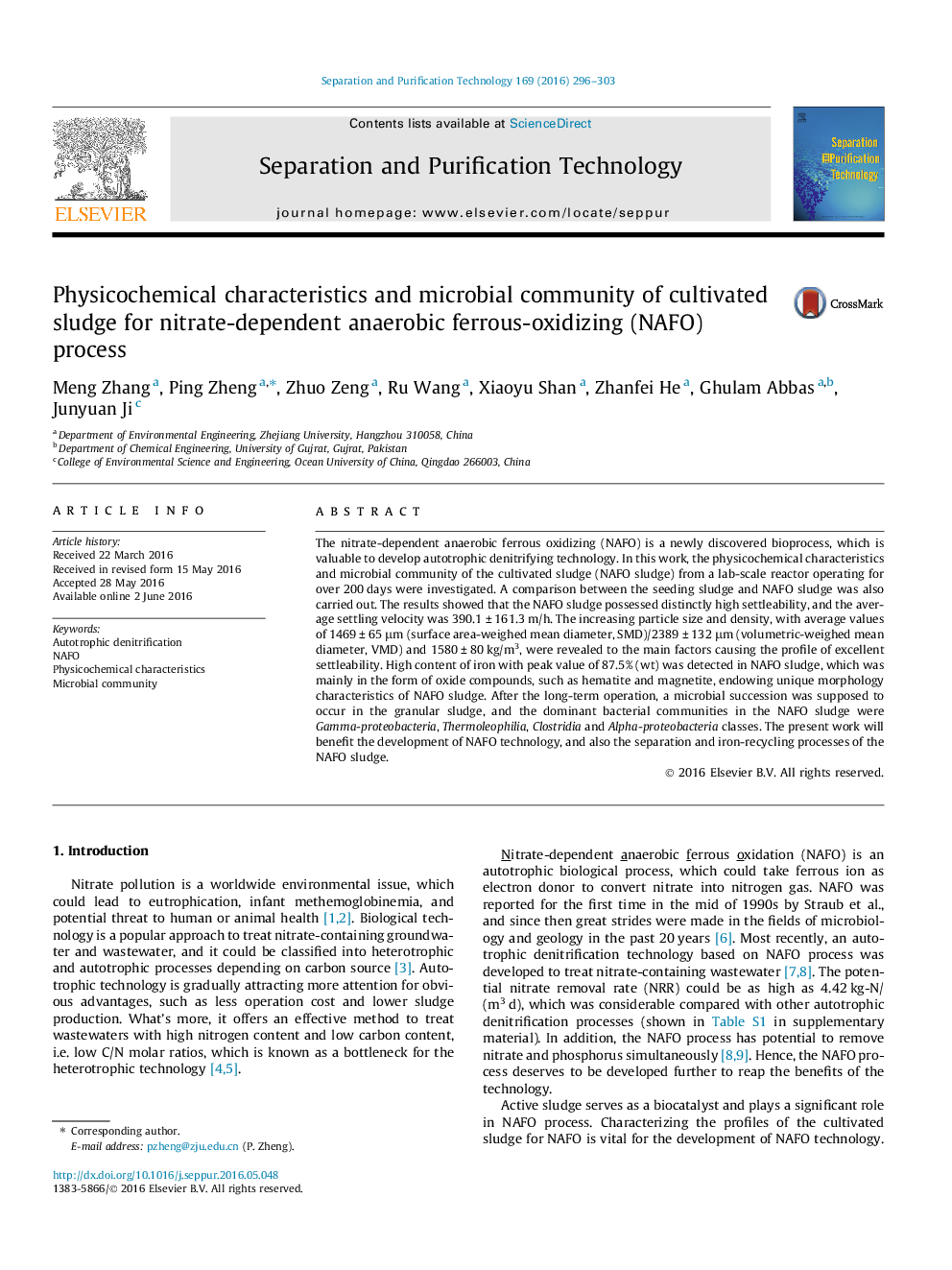| کد مقاله | کد نشریه | سال انتشار | مقاله انگلیسی | نسخه تمام متن |
|---|---|---|---|---|
| 639904 | 1456951 | 2016 | 8 صفحه PDF | دانلود رایگان |

• NAFO sludge possessed high settleability with settling velocity of 390.1 ± 161.3 m/h.
• The increasing particle size and density contribute to the excellent settleability.
• NAFO sludge had unique morphology profiles for high content of iron oxide compounds.
• Microbial succession was supposed to occur during the NAFO cultivation process.
The nitrate-dependent anaerobic ferrous oxidizing (NAFO) is a newly discovered bioprocess, which is valuable to develop autotrophic denitrifying technology. In this work, the physicochemical characteristics and microbial community of the cultivated sludge (NAFO sludge) from a lab-scale reactor operating for over 200 days were investigated. A comparison between the seeding sludge and NAFO sludge was also carried out. The results showed that the NAFO sludge possessed distinctly high settleability, and the average settling velocity was 390.1 ± 161.3 m/h. The increasing particle size and density, with average values of 1469 ± 65 μm (surface area-weighed mean diameter, SMD)/2389 ± 132 μm (volumetric-weighed mean diameter, VMD) and 1580 ± 80 kg/m3, were revealed to the main factors causing the profile of excellent settleability. High content of iron with peak value of 87.5% (wt) was detected in NAFO sludge, which was mainly in the form of oxide compounds, such as hematite and magnetite, endowing unique morphology characteristics of NAFO sludge. After the long-term operation, a microbial succession was supposed to occur in the granular sludge, and the dominant bacterial communities in the NAFO sludge were Gamma-proteobacteria, Thermoleophilia, Clostridia and Alpha-proteobacteria classes. The present work will benefit the development of NAFO technology, and also the separation and iron-recycling processes of the NAFO sludge.
Figure optionsDownload as PowerPoint slide
Journal: Separation and Purification Technology - Volume 169, 1 September 2016, Pages 296–303